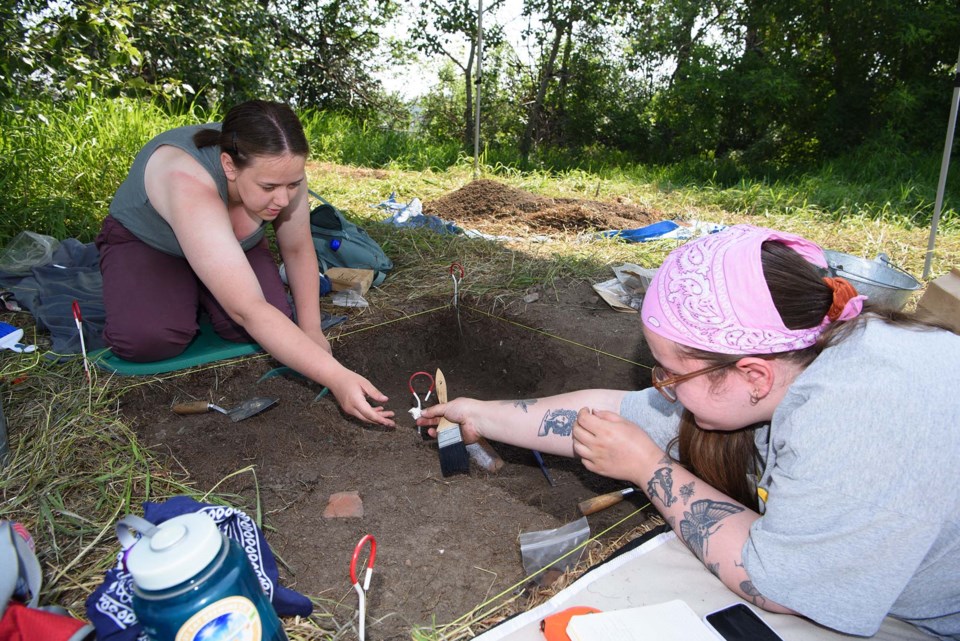It’s like CSI, without the crime (usually).
Two years ago, Kisha Supernant and her team of archeologists dug bottles, bones, and what may have been a kitchen sink out of the St. Albert grain elevator grounds as part of an archeological field school. Now, after months of work in the lab, they’re back in town to share what they’ve learned about the Métis families that put those artifacts there.
“It’s like detective work,” said Supernant, an anthropology professor with the University of Alberta and head of the Institute of Prairie and Indigenous Archeology.
“When you find the source of [an artifact] it is so satisfying.”
Supernant and her team will host talks on July 24 and Aug. 21 at the grain elevator grounds on their findings from the 2023 Indigenous Archeology Field School. Said school saw about 16 post-secondary students excavate two locations on River Lots 23 and 24, which were inhabited by the Métis and First Nations for centuries.
The talk is a rare chance to hear about local archeology and history, said Christina Hardie, public programs and heritage sites manager for Arts and Heritage St. Albert.
“Everyone loves Indiana Jones movies,” she said, referring to the dashing fictional archeologist.
“This is a great opportunity to experience that in your backyard.”
Talkin’ trash
Supernant’s team found that one of the sites they investigated had been used as a trash heap, likely by the Cunningham family, who lived on the site for decades. Supernant said the debris found in such sites can tell us valuable details about everyday life people often leave out of family histories, such as what people ate and what they used as toys or cutlery.
“Your garbage tells a story,” Supernant said.
While her team did find some pre-contact artifacts at the grain elevator site, Supernant said most of the items they found were from the early 1900s and mid-1800s — modern enough that her team could use manufacturer’s marks and other records to trace their precise origins and the paths they took to St. Albert. The team has determined that a cologne/medicine bottle they found likely came from Paris via Montreal, for example, while the suspected sink likely came from Scotland. They also found a piece of a beer bottle by a barn that was from a popular brand of beer made in Calgary in the 1940s–1950s.
Supernant said her upcoming talks would cover insights gleaned from these and other artifacts found during the field school, many of which will also be on display.
Supernant said she plans to run another archeological field school at the grain elevator site in 2026. She said this sort of research helps flesh out the history of the Métis in Canada and should lead to future reports and pamphlets on that subject.
As a descendant of the Cunninghams herself, Hardie said it was exciting to see Supernant’s team digging up new artifacts at the site each day during the field school.
“I could actually touch and engage with artifacts my ancestors engaged with.”
Tickets to the talk are $5. Visit www.artsandheritage.ca/products/metis-trash-talking-an-archeological-footprint-in-st-albert to register.




